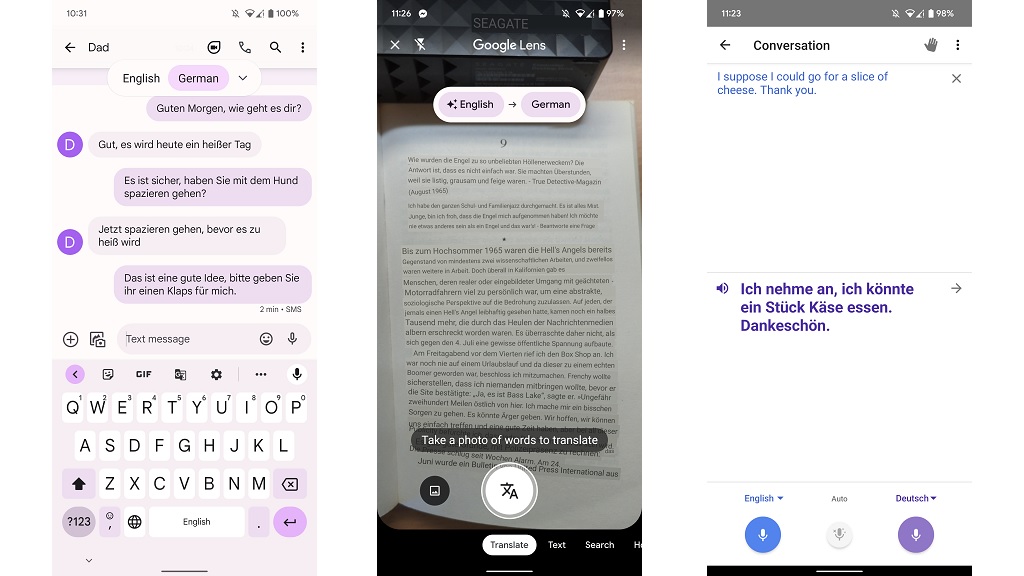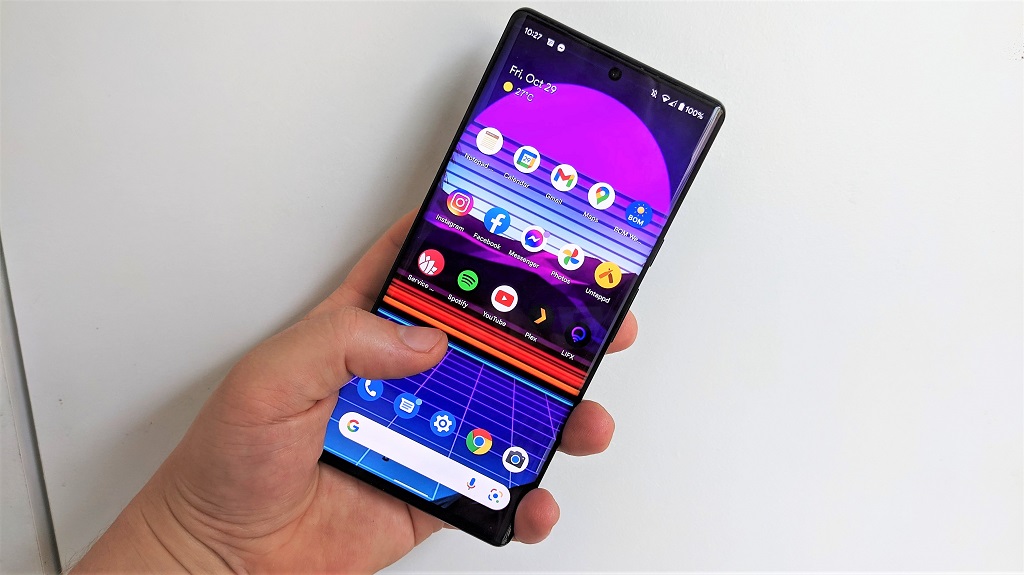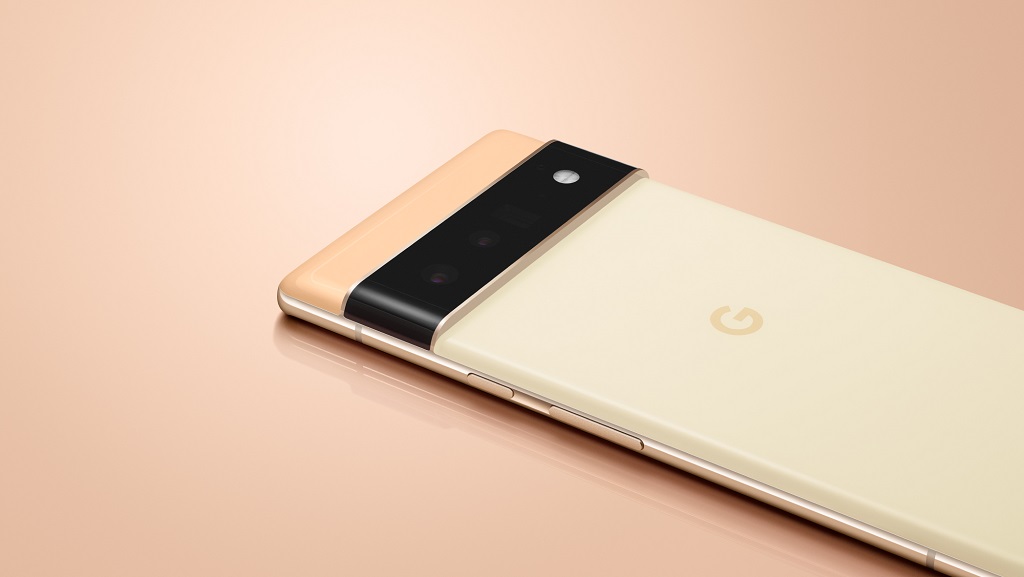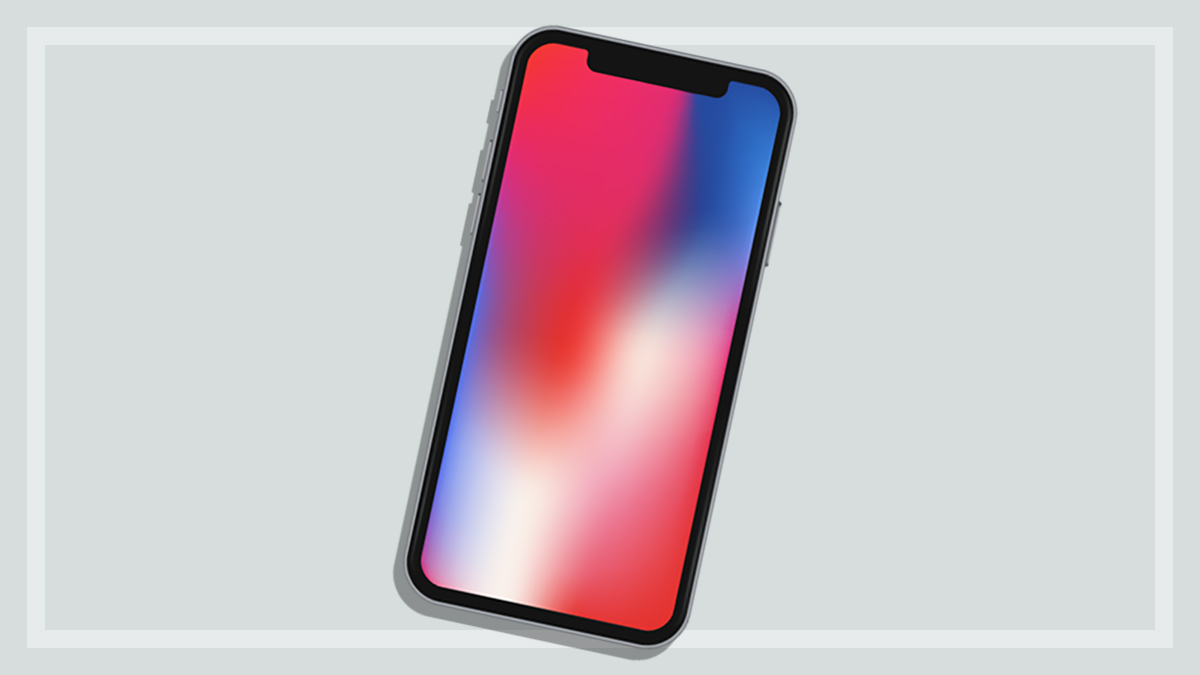Get our independent lab tests, expert reviews and honest advice.
Google Pixel 6 Pro Review

CHOICE verdict
The Pixel 6 Pro has great performance, an excellent camera, a vibrant screen, a sleek new design and even some image and voice processing features that feel like they’ve been plucked straight from the future. But the battery life and lack of some high-end camera functions hold Google’s flagship smartphone back from being the absolute best.
Price: $1299
Contact:
store.google.com/auOn this page:
- Camera quality
- New camera features
- Speech to text and translation tools
- Battery life
- Screen and sound
- Design and build quality
- What about the standard Pixel 6?
After spending the last couple of years making mid-range phones for the average user, Google is back in the top-end market with the Pixel 6 Pro. It feels like Google’s way of telling the world not only can it compete with the big dogs, it can do it at a competitive price.
With a slick new design, significant camera updates and a new processor built entirely in-house, the Pixel 6 Pro is a defining moment for Google. It’ll handle (almost) anything you throw at it and with a few new features that border on futuristic, it’s hard to find much to fault here.
Google Pixel 6 Pro specs
The Pixel 6 Pro is available in 128GB, 256GB and 512GB in three colour configurations.
- Screen: 6.71-inch OLED, 1440 x 3120, 512 pixels per inch, HDR10+ up to 120Hz.
- Weight: 210 grams.
- Battery: 5003 mAh, 30W fast charge. Supports wireless charging.
- Rear camera: Standard, ultrawide and telephoto lenses max 4x optical, 20x digital zoom. 50MP max resolution. Video max 4K/1080p 60FPS.
- Selfie camera: Standard and ultrawide lenses. Video max 4K 30FPS/1080p 60FPS.
- Network: Wi-Fi, 3/4/5G and mmWave 5G where available.
- Bluetooth: 5.2, LE, A2DP, aptX HD.
- Processor: Google Tensor.
- RAM: 12GB.
- Protection: IP68 dust- and water-resistant.
The Pixel 6 Pro also supports eSim, and it doesn’t include a wall charger in the box – the new 30W charger is sold separately. We reviewed this unit using the Android 12 operating system.
Tensor: Google’s new processor
So much of what sets the Pixel 6 Pro apart is the tech that powers it: Google’s very first proprietary processor, Tensor. Though it doesn’t claim to be the fastest chip on the market, it’s got more than enough grunt and claims to offer significant benefits for AI and machine learning.
According to Google, the phone will adapt to your needs as you continue to use it. Things like search, speech to text and live translations become more accurate, battery saving features will be better at optimising apps, and even image processing will improve speed and quality. However, you’ll need to own the phone for some time before you see any of these improvements take effect.
On the security front, AI has supposedly become better at identifying phishing scams, spam calls, links to nefarious websites in messages and more. Plus, because Google has complete control over Tensor, it’s promised five years of security updates for Pixel 6 Pro users.
Camera quality
The Pixel 6 Pro’s camera has had some serious upgrades. New lenses, a new sensor and updated image processing software take the already impressive camera and make it even better. In addition to the standard and rear ultrawide lens, the Pixel 6 Pro includes a telephoto lens with 4x optical zoom, 20x digital zoom and an additional ultrawide selfie lens.
Images look more natural, neutral and balanced with just the right amount of saturation to produce striking but not overly vibrant images. Light and shadow processing continues to be very impressive as the Pixel 6 Pro evenly exposes both even in high contrast environments. But while pictures have plenty of punch, the Pixel 6 Pro can oversharpen them, creating a slightly jagged look on some edges.
The ultrawide rear camera no longer succumbs to the softness that marred 2020’s Pixel 4a 5G. However, it can be a problem with the selfie ultrawide in all but the best lighting conditions. The telephoto lens is top notch though, and even the 20x digital zoom is surprisingly decent though still a far cry from optical magnification.
There’s still no macro mode or proper manual controls, which are limited to very basic white balance and exposure sliders. You can still get pretty close to a subject while retaining a good amount of detail, but the Pixel 6 Pro isn’t capable of taking proper close-up shots. There’s also no burst function, though Tensor does let you fire off eight quick shots in a row before it starts to lag.
Night Sight
Google’s Night Sight feature is still an absolute treat, producing impressive images in low light and artificially lit environments. Astrophotography has returned as well.
But images are a bit brighter, flatter and less impactful than 2020’s iteration of Night Sight. Dark skies and blacks have more of an ambient glow with a soft blue cast that doesn’t look entirely natural at night. Subjects don’t pop in the same way as a result, and noise reduction appears to be a bit more aggressive which softens things up. Ultrawide images don’t seem as sharp when using Night Sight either.
At the same time the Pixel 6 Pro is much better at balancing bright lights when shooting in Night Sight. These are generally far less blown out than the 4a 5G, for example.
Tensor also flexes its muscle here. A Night Sight image takes a few seconds to process but Tensor seems to be able to learn from this. As a result, subsequent Night Sight images shot in similar environments take less than a second to prepare.
New camera features
As well as the updated camera components, Google has launched a few new tools, some of which are available on older Pixels too.
Magic Eraser
This automatically removes people and objects from photos by erasing background subjects and replacing them with the surrounding environment. It’s something Seinfeld fans will be familiar with when George spots himself in Kruger’s family portrait at the beach and attempts to airbrush himself out.
The phone can identify people or objects to remove, or you can highlight them yourself. Then, it identifies and clones the surrounding environment to a pretty impressive degree of accuracy, approximating lighting, shadow gradients, colour hues and patterns.
It can’t work miracles. Overly complex scenes and anything with glass or reflections will prove to be a struggle, but the fact that this happens instantly on a phone is frankly remarkable. It’s one of those features that will impress your friends.
Real tone
This feature claims to produce accurate skin tones for people from all backgrounds, and that appeared to be the case in our testing provided the environment was appropriately lit. Real tone is baked into the operating system and can’t be turned off.
Motion modes
These are designed to replicate low shutter speeds in a D-SLR or mirrorless camera – action pan keeps the subject sharp while the background blurs. While it does look pretty good, it oversharpens the subject and can make them look cartoonish. Long exposure tries to blur movement for a reasonably good artistic effect, but subjects like car lights and water features look more like a smear.
Sky mode
An editing tool that adjusts the colour of the sky and surrounding environments. Examples include stormy and ember to generate different hues and tones. It’s fun but the results look pretty artificial.
Face unblur
This feature automatically sharpens the faces of people moving in a photo. We tried to activate it but couldn’t take a blurry photo despite our best efforts. The Pixel 6 Pro was too fast.
Updated video camera
Camera updates for the Pixel 6 Pro include 4K for the front and selfie cameras and automatic HDR (high dynamic range). There’s also a speech enhancement tool that can isolate and amplify voice in noisy environments when filming in selfie mode. It’s an impressive feature that works quite well, however you may need to speak a little softer than normal when using it, as speech enhancement is a bit prone to maxing out the microphone which will cause light distortion.
Overall video quality is really nice with HDR applied naturally across the footage. Though it’s worth noting that the microphone can sometimes increase the gain in quiet environments which leads to unwanted hiss.
Speech to text and translation tools
While speech to text, text to speech and translations are nothing new in the smartphone scene, Tensor feels like it’s taking these features into the future. Much of what the Pixel 6 Pro can achieve would have required dedicated dictation software up to this point, though it’s not without its faults.
We tested the phone’s translation features using English to German, followed by German to English. It’s worth noting that accuracy may vary with other languages.
Speech to text
It’s now possible to dictate messages across a variety of apps with next to no input lag. We tested this feature in English and found that the Pixel 6 Pro understood most words and even did a decent job with punctuation based on our speech patterns. However, it did struggle with less common names and some aspects of the nasally Aussie accent such as ‘S’ sounds. ‘Censored’, for example, often comes out as ‘sense of’. We also learned that every app aside from the phone’s inbuilt record and transcribe software censors swearing.
Text translations
The phone can automatically detect and translate text from messages, websites and even via the camera on things like packaging and concert tickets. If someone is texting you in Spanish, the phone can automatically translate it to English and vice versa.

Watching the pages of a book change from English to German before your eyes is another one of those ‘we’re living in the future’ moments. There are a number of language packs available that you can download as needed.
Live translate
Google’s existing translate app is now zippier when converting conversations on the fly. It’s actually possible to put the Pixel 6 Pro between two people and hold a relatively good conversation in two different languages. The app claims that some translations can now work offline, but this feature was greyed out when disconnected from a Wi-Fi or mobile network.
Though it may not be bang on accurate 100% of the time, it’s still really, really impressive tech that should get better with time. When you’re using the app, it honestly feels like language barriers are far less of an issue.
Battery life
Google makes a few broad claims about the Pixel 6 Pro’s battery life, including ‘all day’, ’24-hour’ and ’48-hour Extreme Battery Saver’ mode. During our assessment, we found that if you’re a casual user making calls, checking emails, some websites and maybe taking a few photos, then the Pixel 6 Pro will easily last from breakfast to bedtime.
But if you’re regularly messing around on social media, calling, texting, taking lots of photos, listening to music and watching videos, then the battery will only just make it to the end of the day, and may need a 3pm boost if you’ve got after-work plans.
The battery survived almost 11 hours when streaming HD video (with some HDR and 60FPS content included) at maximum brightness which is more than enough to keep you entertained during long summer road trips. Just bear in mind that watching content at higher resolutions increases power consumption.
Google claims that the new 30W charger can bring a dead battery up to 50% in around 30 minutes. This is true, as our Pixel 6 Pro hit that point in just under 33 minutes, followed by 75% at 58 minutes and a full charge in two hours five minutes. It is sold separately though so you’ll need to shell out an extra $45 if you want those speedy charges.
Screen and sound
The 6.7-inch 1440 x 3120 OLED display is easily the best screen that Google has put in a phone. It’s clear, crisp and vibrant in standard mode and beautiful to look at when HDR is active. HDR presentation is punchy but balanced, without becoming overly saturated or blindingly bright.
Improved processing power means banding and artifacting are non-existent and colour gradients naturally transition into one another. The only downside is the screen is a little dim and this can cause some black crush especially when HDR is turned on.

Although the Pixel 6 Pro supports 120Hz refresh rate, this is basically limited to the home screen and a couple of apps with everything else scrolling between 60–90Hz. Nevertheless, the results are silky smooth and should future-proof the phone as 120Hz becomes more mainstream. While this does require more power, you can set the phone to drop the refresh rate to as low as 10Hz if your battery starts to run down.
The speakers are fairly standard smartphone fare with some width, presence and slight dynamic range so you’re not stuck with a wall of sound punching you in the face. But what’s frustrating is the placement. The Pixel 6 Pro has a single speaker on the top, and two on the bottom. Though this improves the aesthetics, it’s far too easy to cover up the bottom speaker with the palm of your hand when viewing in landscape.
Design and build quality
The Pixel 6 Pro showcases a sleek, modern design that includes a screen with neatly curved edges. The new rear camera bar, which houses the optics and flash, has copped a bit of online criticism but it’s hard to see why. Though it does protrude a little bit it isn’t overly thick, and it also stops it from rocking on a flat surface.
IP68 weather sealing also helps protect the phone if it happens to take an unexpected dip in up to 1.5 metres of water. It includes hardy layers of Gorilla Glass Victus on the front and back of the body that feel nice as you navigate.

The biggest change is that the fingerprint sensor has been moved from the back of the phone onto the bottom of the screen. It takes some getting used to if you’ve owned Pixel phones before but appears to be a better visual fit, despite being a bit slow to active.
Though the 6.7-inch screen is very pleasant to look at, it does make for a large phone. Users with smaller hands can forget about one-handed navigation across and up and down the phone. It also has a bit of heft to it and while it’s hardly heavy, you’ll notice it in your pants pocket.
General performance
There really isn’t much that this phone can’t handle. Think of any day-to-day task and not only will the Pixel 6 Pro tackle it, it’ll do it quickly. Google Assistant responds to commands almost instantly and can control smart devices around the home, such as lightbulbs, with minimal delay.
In terms of more labour-intensive applications, we encountered zero lag or frame rate issues when playing Call of Duty: Mobile online and watching 4K HDR 60FPS video. Even uncompressed 4K video streamed over Wi-Fi from a local NAS drive couldn’t kill the Pixel 6 Pro, although it did drop a few frames during this extreme test.
It’s worth noting that the phone did get a little warm when the processor was really working hard – we could feel the heat on the back after using Android Auto for about 20 minutes. But it didn’t warm up to any concerning levels and a case will most likely negate this.
What about the standard Pixel 6?
Google has also released an entry-level version of the Pixel 6 for $999. Though cheaper and lacking in some of the finer features, it’s still many steps above the mid-range models from 2020. The main thing is the Pixel 6 uses the same Tensor processor and operating system as the Pixel 6 Pro, so performance is going to be pretty similar across the board.
Pixel 6 versus 6 Pro: key differences
Pixel 6: 6.4-inch screen (90Hz max refresh rate).
Pixel 6 Pro: 6.7-inch screen (120Hz max refresh rate).
Pixel 6: 4614 mAh battery.
Pixel 6 Pro: 5003 mAh battery.
Pixel 6: No telephoto lens.
Pixel 6 Pro: Telephoto lens.
Pixel 6: No 4K video in selfie mode.
Pixel 6 Pro: 4K video in selfie mode (1080p max).
Pixel 6: 8GB RAM (no 512GB storage option).
Pixel 6 Pro: 12GB RAM (512GB storage option).
Other differences include:
- the rear of the phone uses a slightly less robust version of Gorilla Glass than the front
- the screen edges don’t roll off.
If you’re a general consumer with standard mobile needs and only really use your phone for calls, messages and basic web work like emails, then opt for the Pixel 6. But if you’re regularly using your phone to take photos, videos, play games or watch content online, then consider saving up for the Pixel 6 Pro as you’ll most likely appreciate the added specs and features.
Is the Pixel 6 Pro right for you?
When it comes to the Pixel 6 Pro, it doesn’t feel like much is missing or that compromises have been made – it even brings with it some tech that feels like it’s downright futuristic.
All that’s really stopping the phone from earning a perfect score is the lack of more advanced camera functions and features – you’d think Google would include robust manual photography settings and a macro lens in its ‘Pro’ phone offering. A bigger battery that truly lived up to the 24-hour claim would have been nice as well.
Nevertheless, there’s a definite ‘wow’ factor at play here. Mid-range phones can easily get the job done, sure, but the Pixel 6 Pro is like the difference between Blu-ray and 4K UHD. The latter is just fine, but once you try the version that looks nicer and runs faster, it’s pretty hard to go back.






